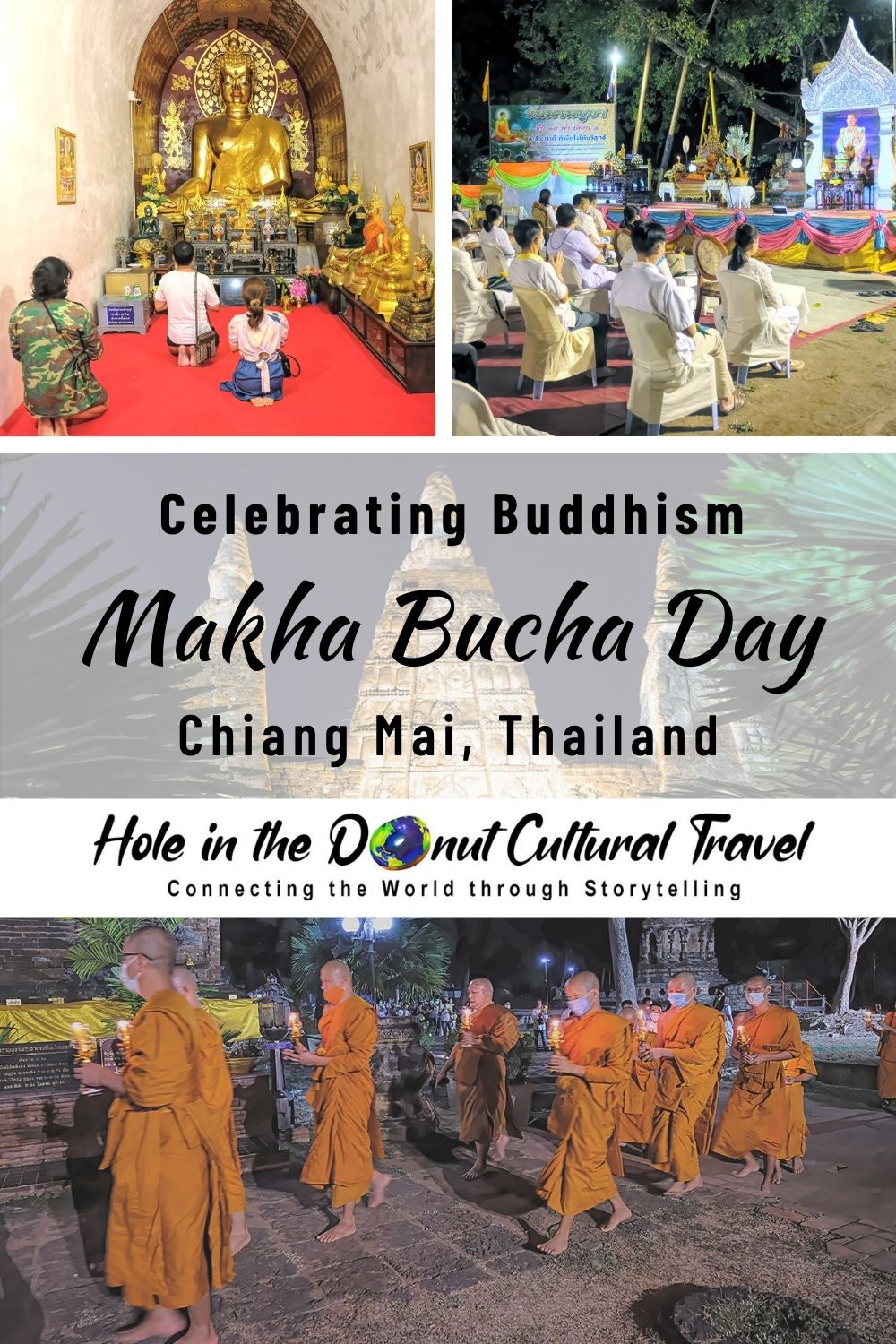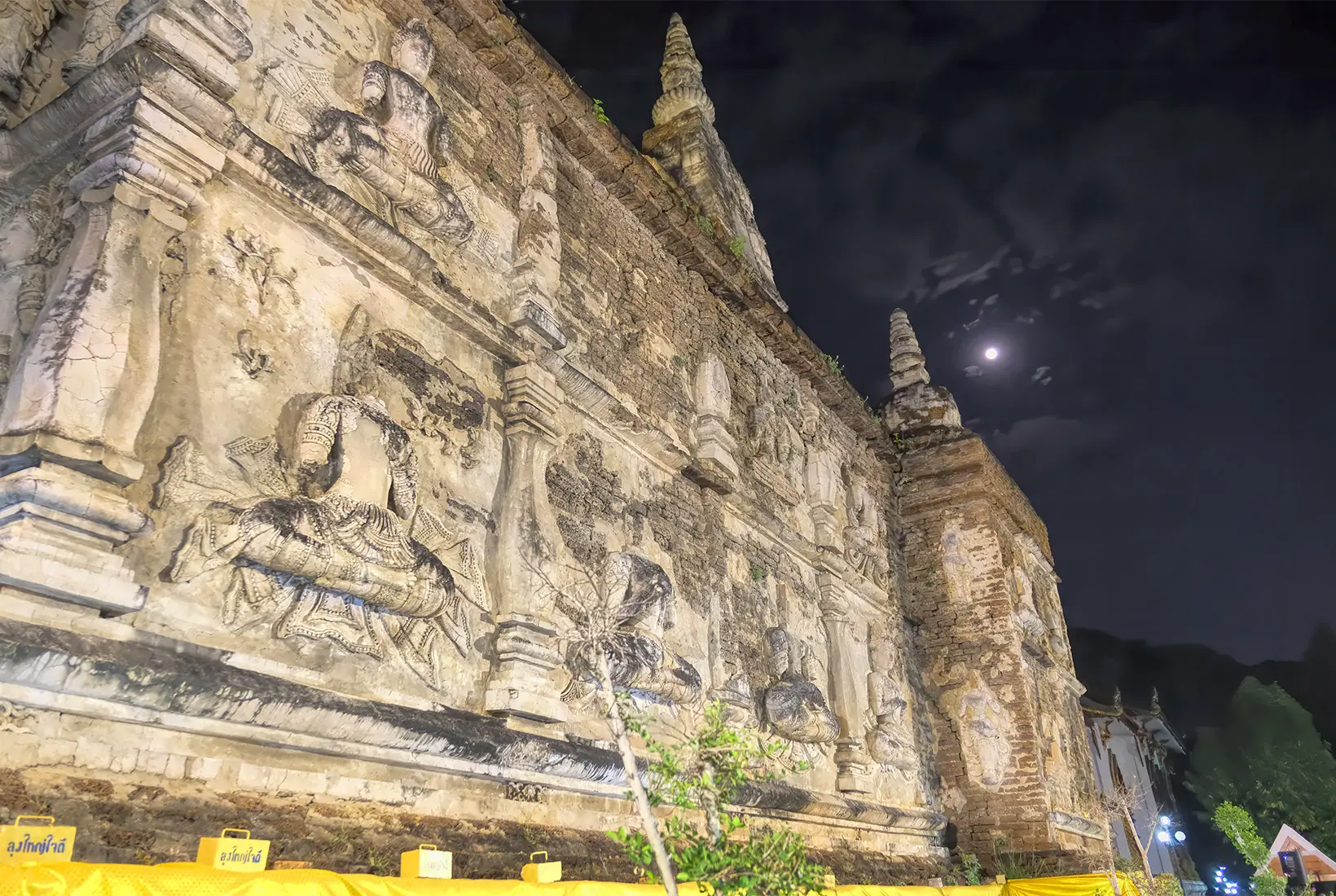It may have been nearly 14 months since I’ve been able to travel internationally, but that doesn’t mean I’ve been sitting at home here in Chiang Mai. I’ve taken advantage of COVID travel restrictions to do something that’s long been on my to-do list: delve more deeply into Buddhism. Even though I embraced Buddhism as my belief system more than 20 years ago, I am constantly aware of how much more I have to learn.
Last Friday was Makha Bucha Day here in Thailand, the second most important Buddhist holiday of the year. It commemorates an event that happened in India, when 1,250 members of the Buddhist Sangha (the community of monks, nuns, novices, and laity) spontaneously visited a bamboo grove where the Buddha was teaching about the core principles of Buddhism. Each of the participants was an Arahant (an enlightened disciple) who had been ordained by the Buddha himself. During Buddha’s teaching, the 1,250 Arahant gained insight into the true nature of existence and achieved nirvana. As a result, they were released from the endless cycle of rebirth and suffering.
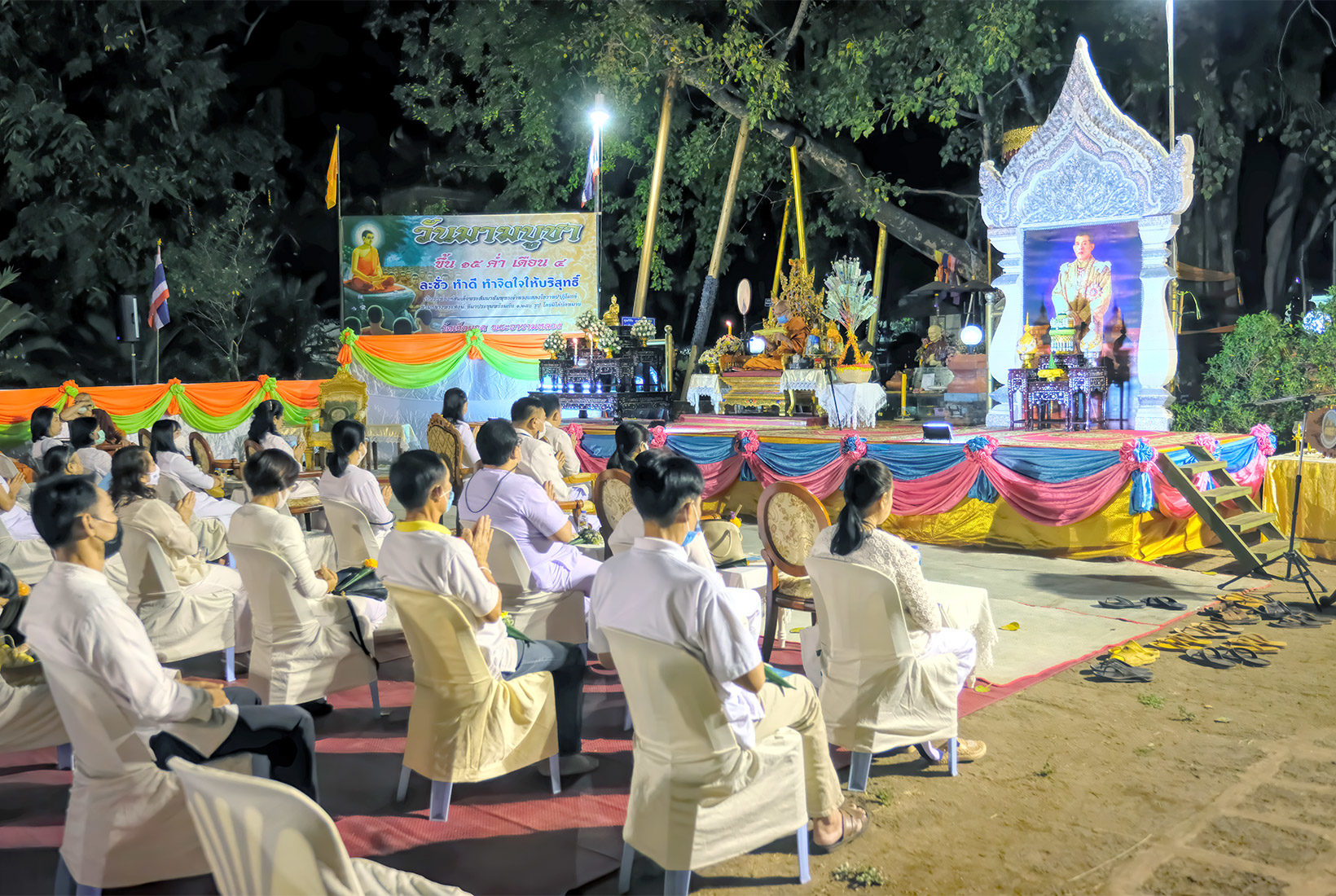
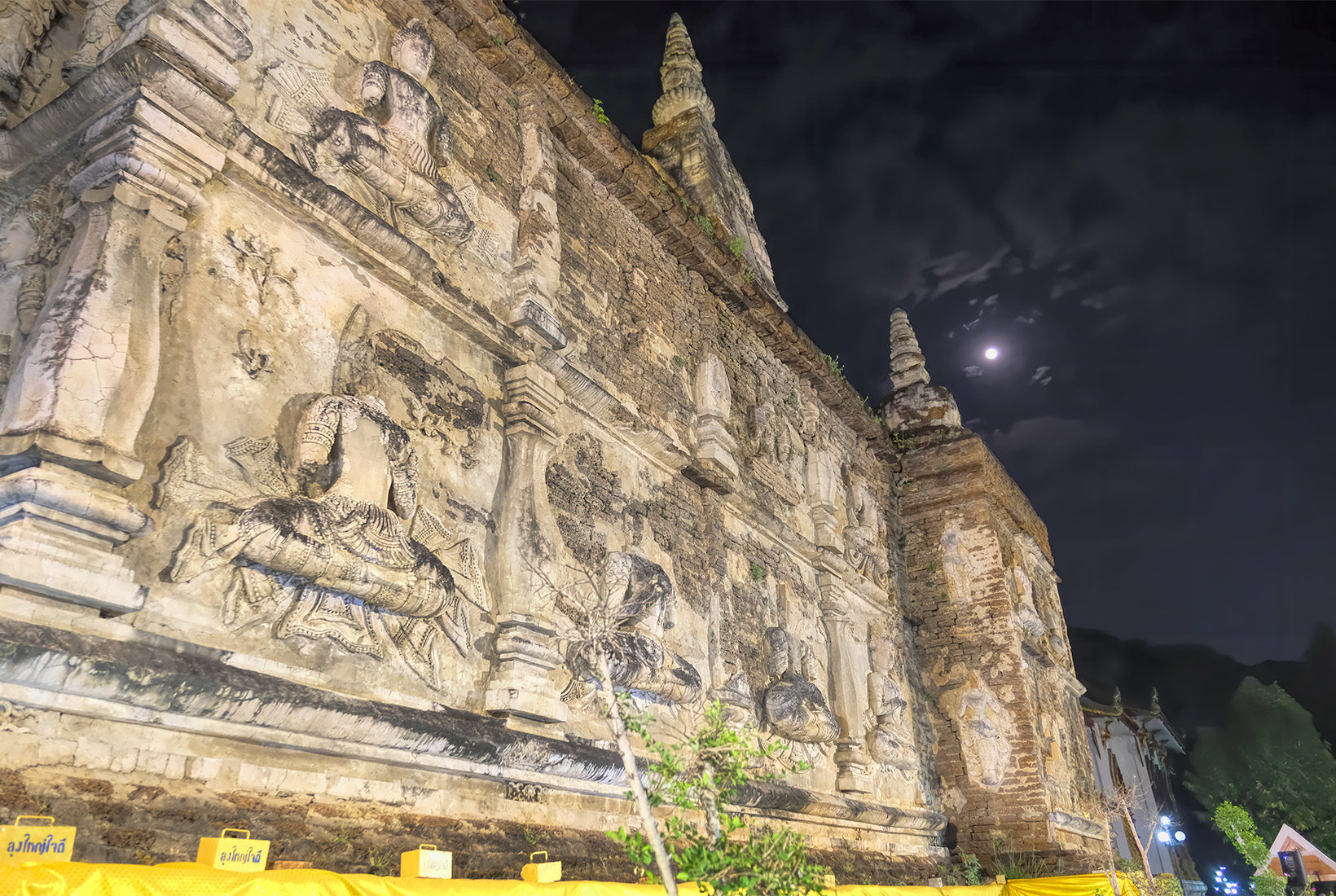
These days, Makha Bucha Day is an occasion for Buddhists go to the Wat (temple) to meditate, listen to teachings given by the monks, and perform merit-making activities such as giving alms to the temple and Sangha. I eagerly accepted an invitation from my friend Doug Bonner and his Thai boyfriend Pop, to attend this important celebration at Wat Jed Yod, an 800-year old temple and one of the oldest in the city.
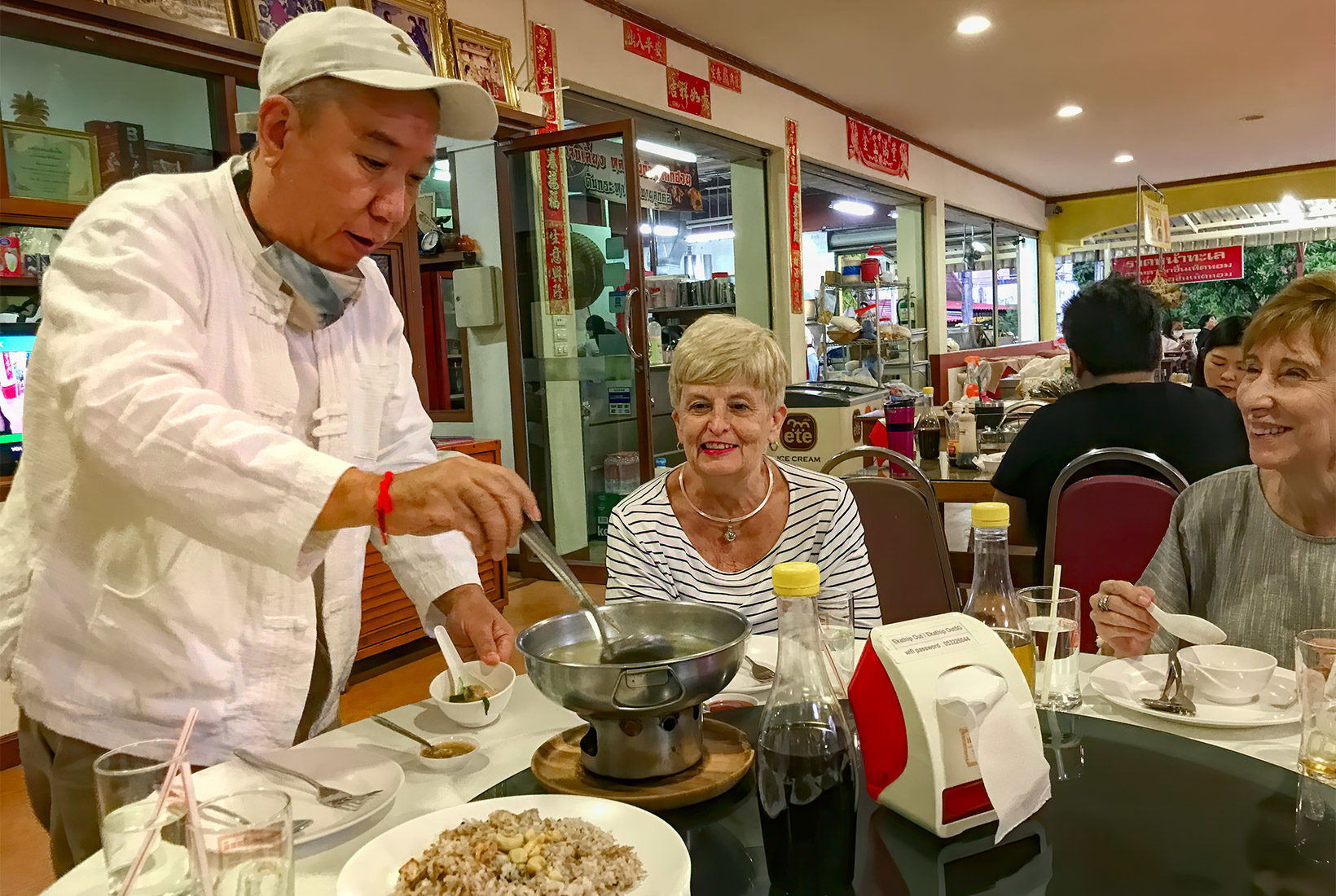
Our group of three grew to six and expanded to include dinner at Ekathip Chokdee Chinese Restaurant. We ordered a slew of dishes and stuffed ourselves before heading to Wat Jed Yod for the festivities. I’ve wanted to visit this Wat forever and just never got around to it. It was quite special seeing it for the first time at night, lit by candles and spotlights, with monks chanting prayers in unison as we walked into the grounds.
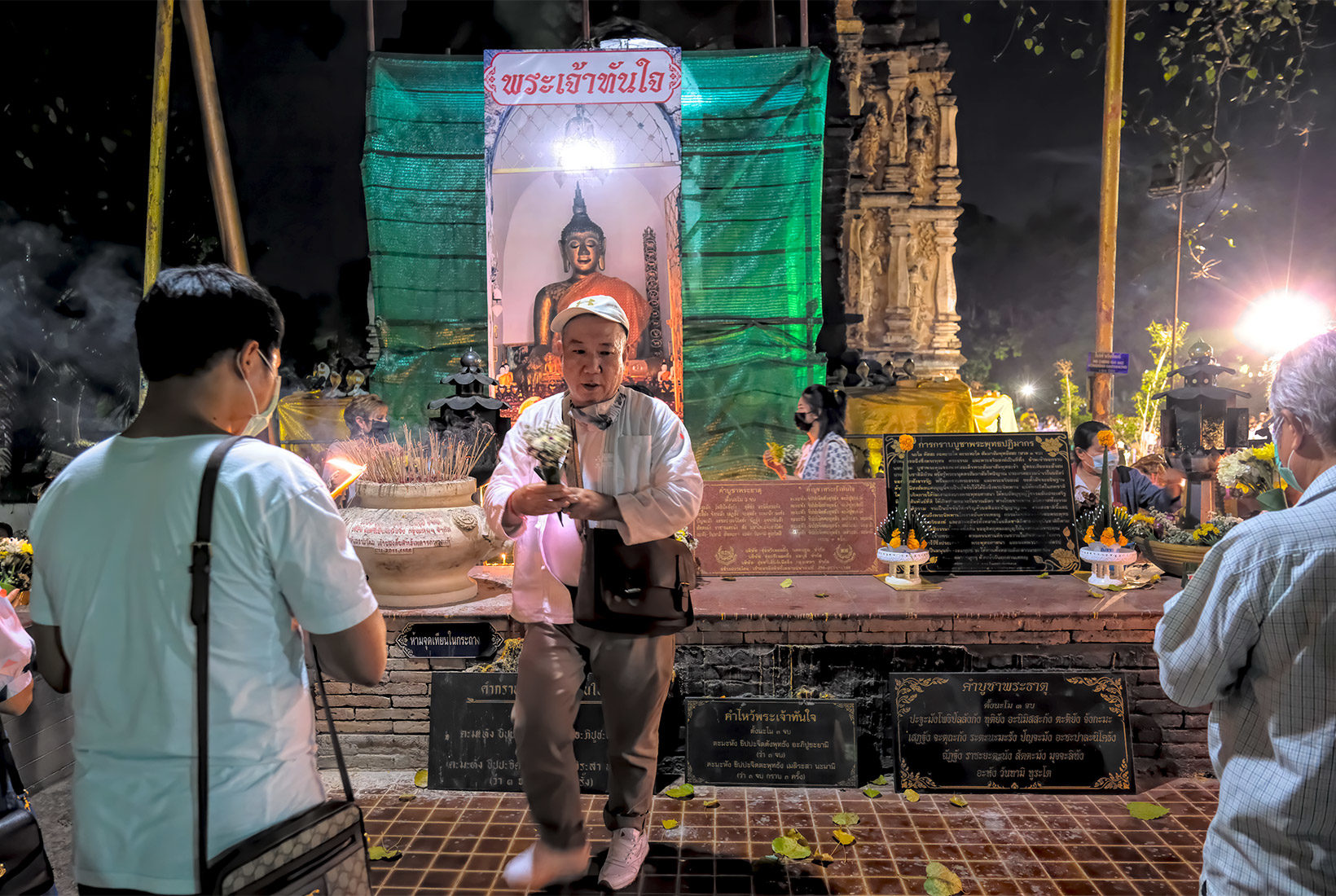
I dropped a few Thai baht into the donation box and picked up a small bunch of fresh flowers, along with a packet containing three incense sticks and a single candle. Making my way through an audience of worshipers dressed in pure white, I stopped first at a small altar. Here I laid my small bouquet before an image of the Buddha and lit the candle to pay my respects. I lit my three incense sticks, representing the three Jewels – the Buddha, Dharma, and the Sangha – and stuck them in a large pot of sand. The fragrant smoke spiraled up lazily in the hot, humid night air.


Some years ago, I asked a monk why incense burning was so ubiquitous at Buddhist temples. He cocked his head and smiled. “The smoke carries our prayers,” he replied. It’s more likely that the practice evolved from the need to cover the stench of unwashed bodies and sewage in the earliest days of Buddhism, but his answer delighted me. To this day, I think of his explanation every time I participate in a Buddhist ceremony. I craned my neck back and followed the smoke on its heavenward journey, feeling certain that my prayer to be mindful and entirely present had been granted.
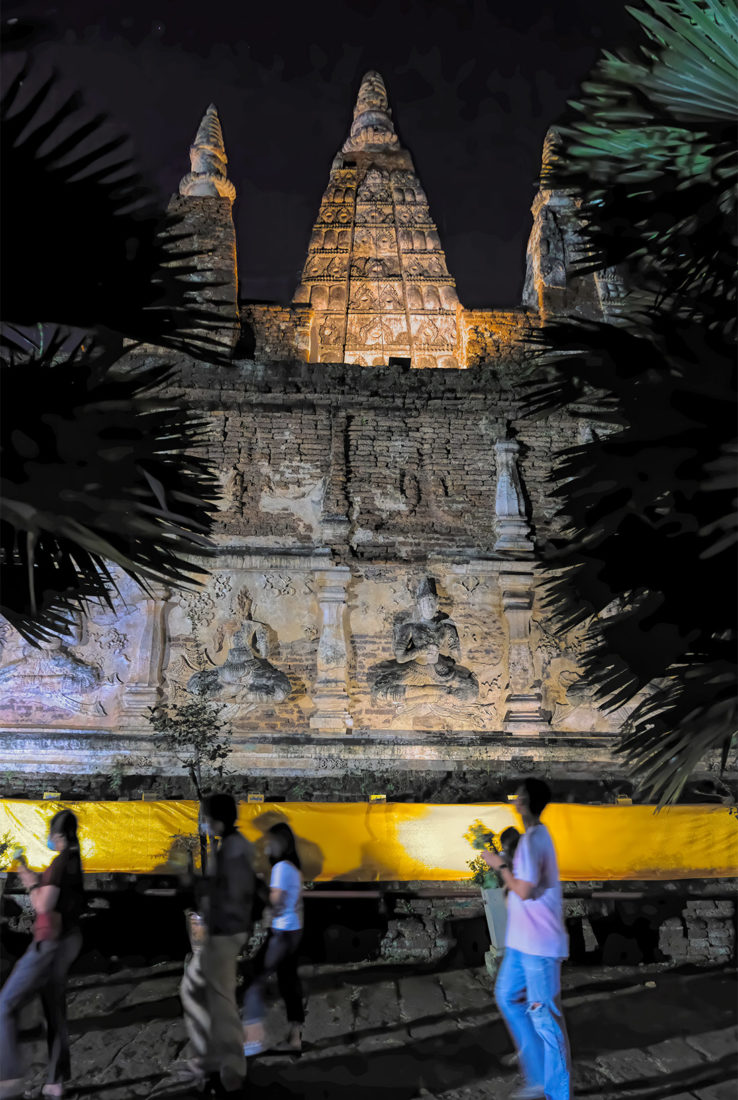
Having completed my devotions, I pressed my palms together in front of my chest and began walking clockwise around the Viharn (worship hall). I should have been meditating, but the spectacular architecture was too captivating. The official name of this temple is Wat Photharam Maha Wihan, but everyone just calls it Wat Jed Yod. Its construction, which began in 1455, was ordered by King Tilokarat. Its design is widely believed to be modeled on the Mahabodhi Temple in Bodh Gaya, India, where Buddha attained enlightenment. Having made the pilgrimage to Bodh Gaya myself, I can confirm the similarity in the seven richly carved spires that crown the Viharn.
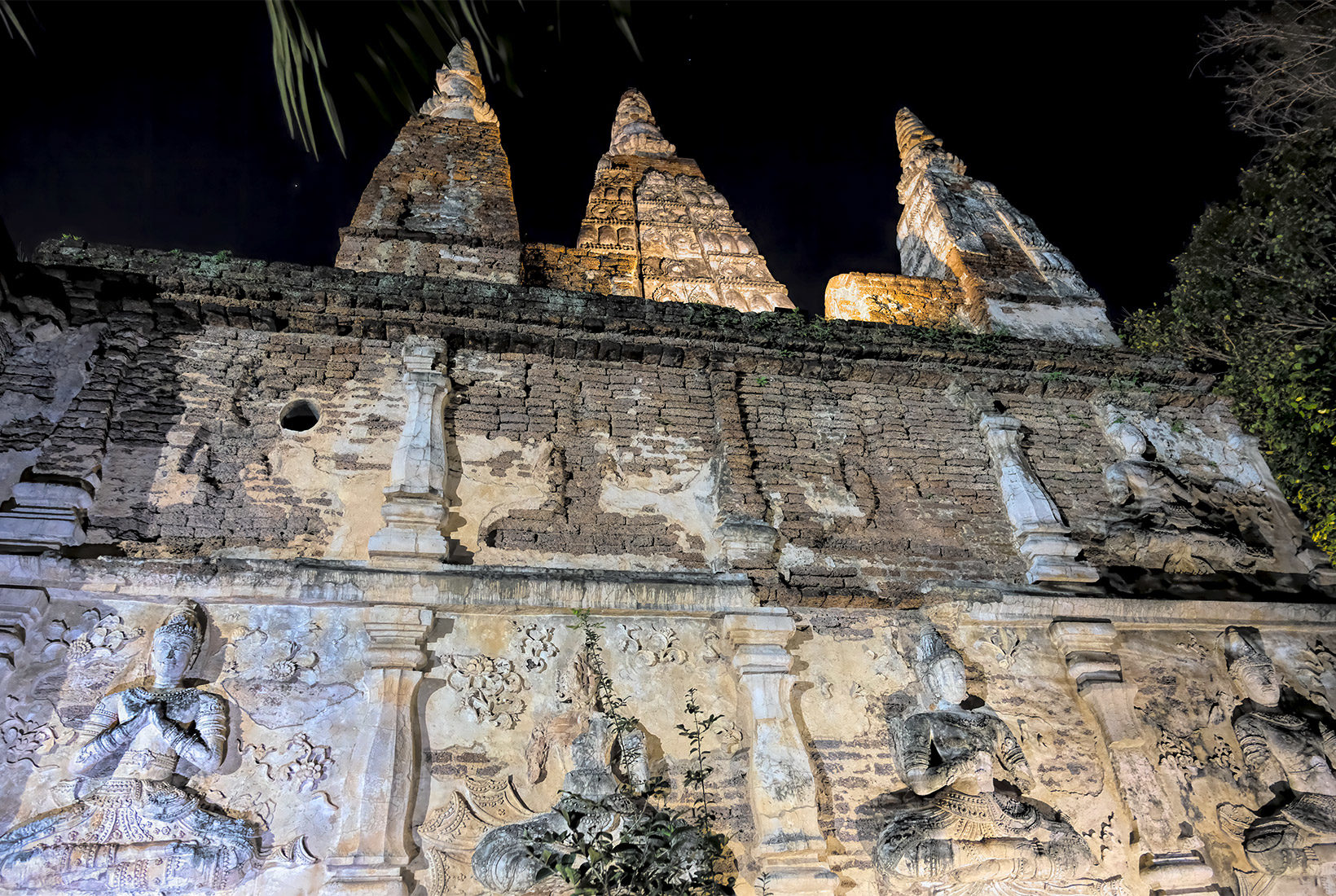
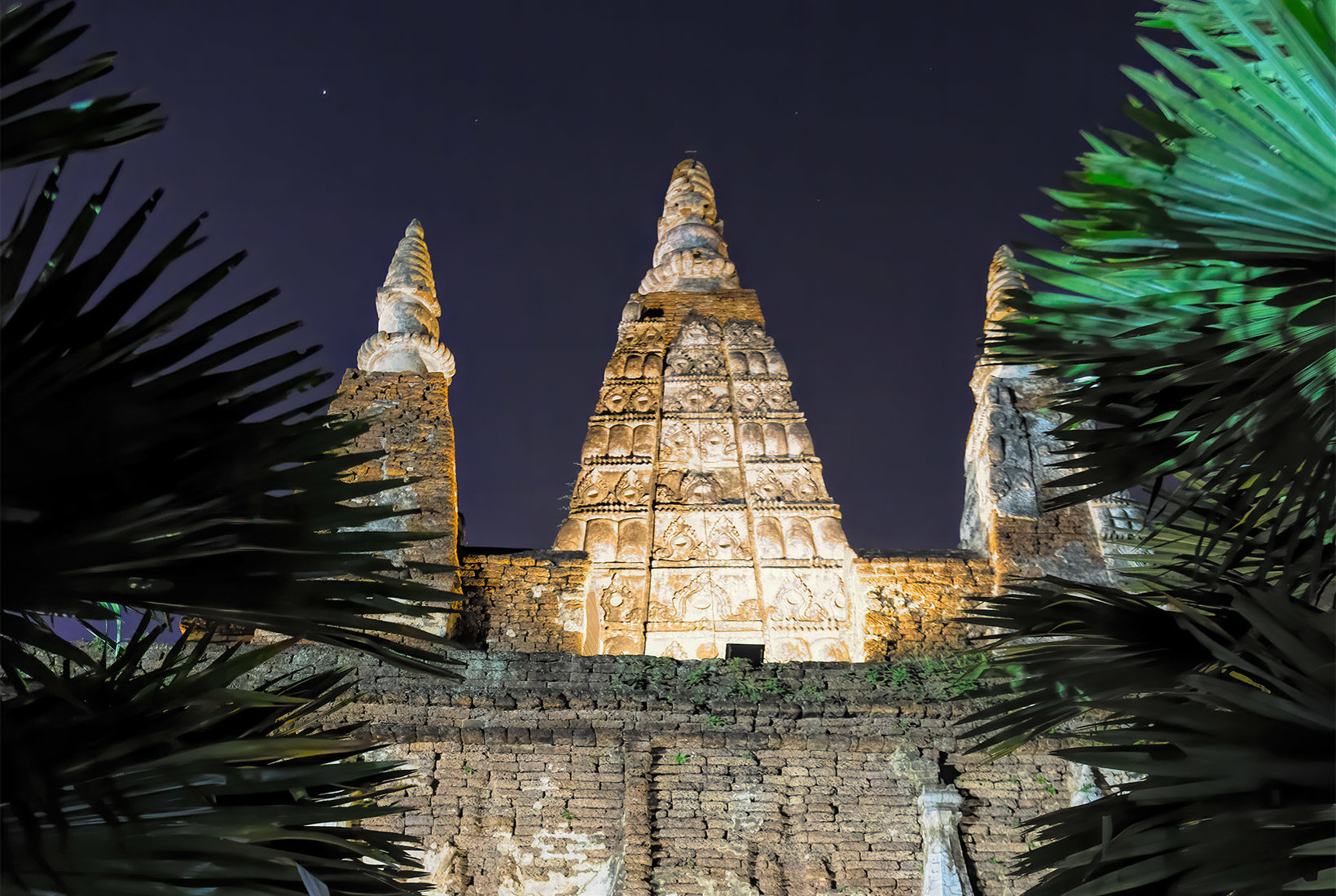
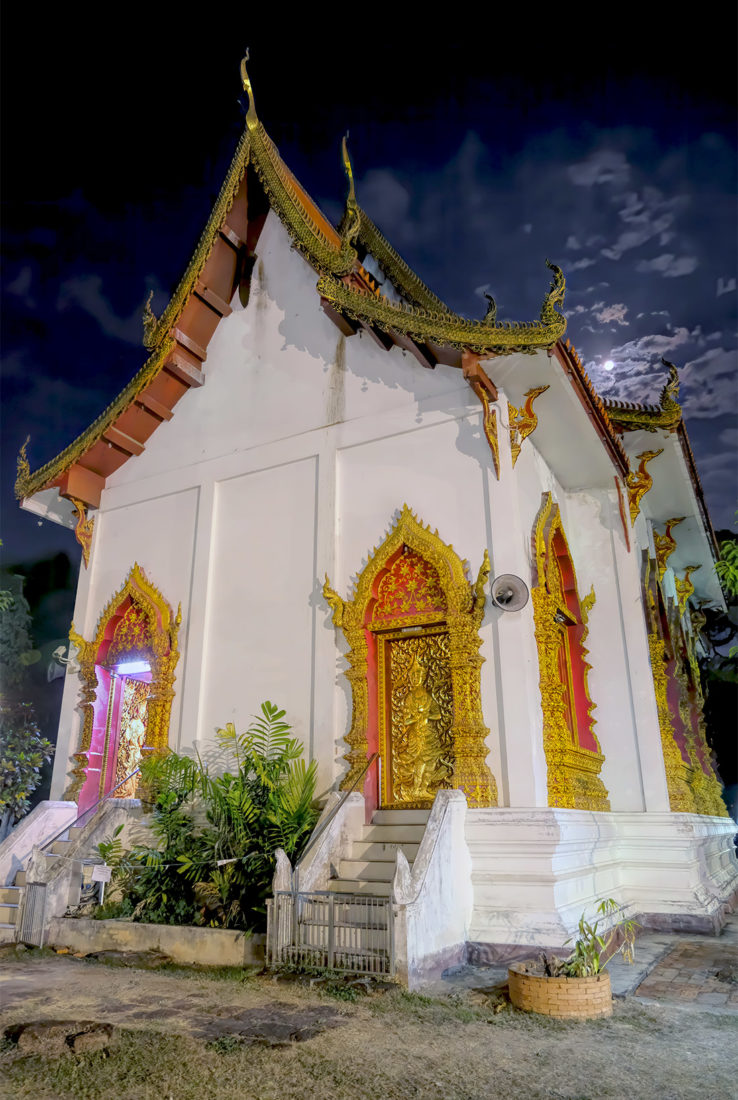
The exterior of the Viharn features 70 stucco reliefs of divine beings known as Devas. The faces of the Devas are said to have been fashioned in likenesses of relatives of King Tilokarat (lacking a time machine, I’ll have to take the word of historical records in this instance). Halfway around, I removed my shoes and climbed a few stairs to the interior of the Viharn, where a golden image of Buddha sat at the end of the narrow, barrel vaulted chamber. Bowing three times, I repeated the words I say every morning while standing before my Buddha image at home: “Illusion, impermanence, mindfulness.”

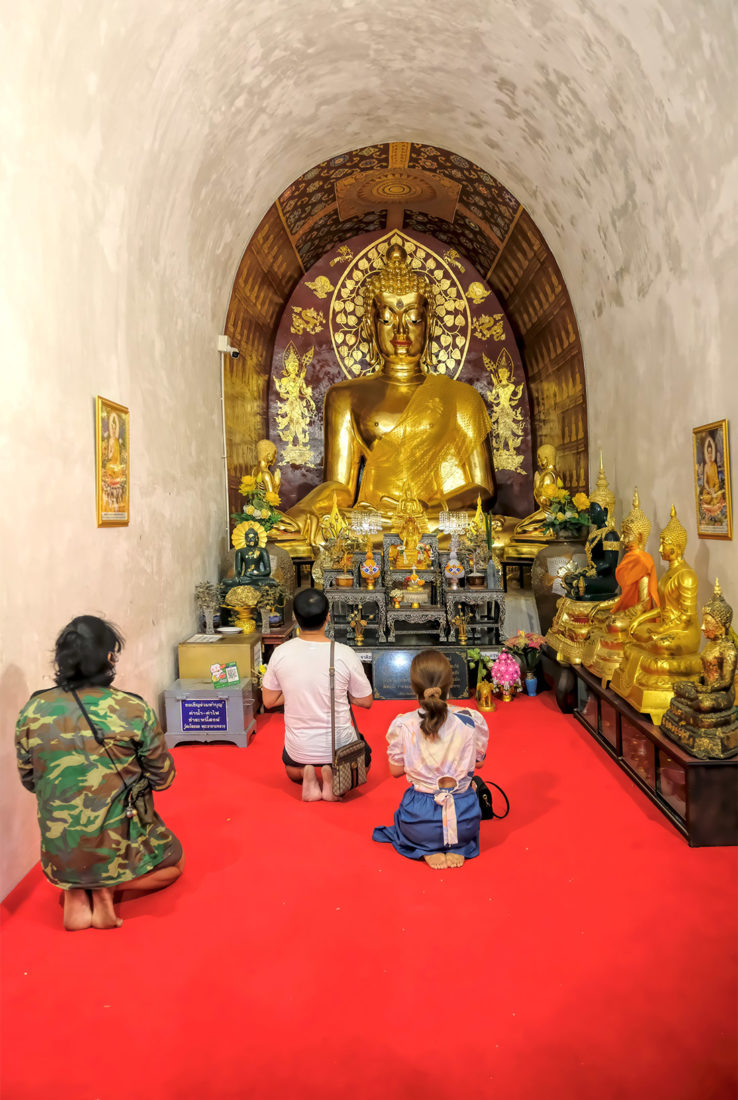
Back outside, orange-clad monks were chanting in unison as they circumnavigated the Viharn. I fell in behind them, only to be pulled aside by Pop. He lined us up in front of the procession in order to shoot a video that he will eventually upload to his YouTube channel. Fortunately, he was gracious enough to allow me to feature it here as well.

I didn’t learn anything new during Makha Bucha Day. The evening was more about experience than gaining concrete knowledge. More often than not, this is what happens when I immerse in Buddhist activities. But perhaps this is the point. Perhaps experience is what allows me to feel so deeply attuned to this belief system that, despite the claims of experts, is a philosophy rather than a religion.
